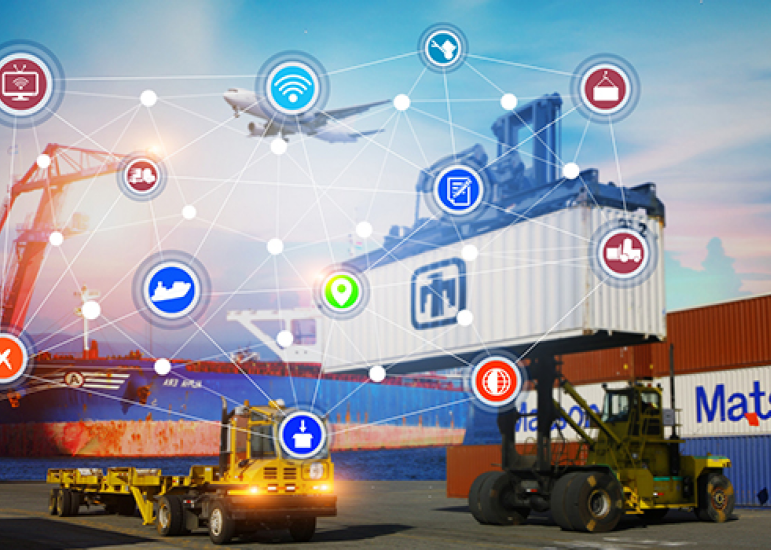Eco-Friendly Shipping: Green Solutions in Container Transportation
Introduction
Final Thoughts Considering the vast importance of the maritime industry to global trade, it is only a question of time when sustainable container transportation will have no other choice but be put into practice. The implications of shipping for our environment are astounding; greenhouse gases, water and noise pollution. Global Trade All Change for Container Shippers as Green Solutions Reshape the Face of Transport Vanilla HTML Vanilla HTML Vanilla CSS886 shares global trade sustainability: Practice Rewarded in Terminal, Israel green highlight topics tech products2293 shares Next Story JJRC X19 Hercules Quadcopter Under $100 Last Story Close Filed Sites India Wants Tesla.org Global Traded ec.
The Environmental Issues of Today in The World Of Container Shipping
Container vessels add to air pollution in the form of sulfur oxides, nitrogen oxides, particulate matter.“Container ships account for a significant slice of global carbon emissions and a large part of the world´s air pollution including Sulphur oxides (SOx), Nitrogen oxides (NOx) and Particulate matter.” Over time, this water pollution from ships' ballast operations releases invasive species and disturbs marine environments. In addition, the sound pollution of ship engines and operations is a disturbance to marine life that changes fish behavior and communication@Injectable.
Regulations and environmental standards
To combat these issues, certain regulatory frameworks like the Marine Environment Protection Committee (MEPC) standards of the International Maritime Organization (IMO) have been put in place to regulate ship emissions and ballast water management. On a local level, legislation such as the European Union's Sulfur Directive have pushed emissions limits down even lower in particular locations. Certifications like ISO 14001 encourage a systemic approach to their construction0s environmental impact.
Container Ship Design with Green Solutions
Eco Ships — At he Frontier of Green Shipping As it were, next generation ship designs are making headlines. Significant emission reductions are also recorded for energy-efficient propulsion systems, as for example based on LNG (liquified natural gas) or advanced battery technologies. Ship designs are hydrodynamic to reduce resistance and the subsequent fuel consumption. The use of other alternatives fuels like bio-fuel, hydrogen etc., is also gaining ground where the industry is heading for de-carburization.
Green Shipping: Operational Strategies
For greener shipping, we could not afford to lose our operational strategies as well. Fuel consumption is minimized through optimal route planning to travel the shortest distance, and emissions are lower but do not impair efficiency by slow steaming. Efficient waste management and recycling methods are followed in ships to keep pollution levels low. Ballast water treatment systems help to prevent the transmission of invasive species and protect marine biodiversity.
Eco-Friendly Container Technology Innovations
The use of eco ships is also conducive by the advancement of container technology. Ships weigh less, and burn less gasoline, if they are filled with lightweight containers instead of old heavy ones. Solar trackers and monitoring software gives system operators the ability to harness renewable, sustainable energy resources with less reliance on grid power. These packaging materials which are made biodegradable are a good way to consumer alternatives to traditional plastic, which only serve as the means of making waste.
Green Ports and Terminals
Green.green shipping is already being reducing by green land on Ports and terminals. As ports have transitioned to support clean energy, a growing number of locations now feature solar panels and wind turbines. On-dock rail operations and shore power connections similarly place both short-haul and long-haul trucks off the roads; GET reduces emissions by allowing ships to plug into the local electrical grid so they are not using auxiliary engines while in port. Ports Develop Resource Efficiency Programs that extends the Supply Chain Elements to Waste Management and Environmental Programs as does efficiently.
Barriers to Solutions Green
Challenges persist in spite of these green technology advances. It is the case that for some shipping lines, the upfront cost of green technologies can be high and with a long "pay back" period post-investment. But technological compatibility and standardization in the industry is a major issue, since not all ships and ports are able to handle the same kind of green technology. This is where the industry must find a balance between environmental objectives and economic sustainability.
Success Files in Green Initiatives
Four shipping lines and ports already achieved sustainable measures The pledge of Maersk, for instance, to make shipping carbon-neutral by 2050 acts as a groundbreaking notion and the company continues to channel vast investments into alternative technologies and fuels. Sustainable Development Program of the Port of Rotterdam which has brought about 17% lesser CO2 emissions through all those green initiatives 2007 and 2016. Industry wide change is possible — The collaboration between environmental NGOs, like the World Wildlife Fund (WWF) and shipping companies to cut emissions is a good example.
Conclusion
But the transition to greener shipping is not solely about the environment, it is a required inheritance of our globe. As the industry continues to grow, it needs to do so in a sustainable manner which includes utilizing green solutions that benefit the environment and enable global trade. All stakeholders, from the shipping lines to the port authorities and regulatory bodies, have a collective responsibility to ensure that we stay on course for sustainable container transportation solutions.
Table of Contents
- Introduction
- The Environmental Issues of Today in The World Of Container Shipping
- Regulations and environmental standards
- Container Ship Design with Green Solutions
- Green Shipping: Operational Strategies
- Eco-Friendly Container Technology Innovations
- Green Ports and Terminals
- Barriers to Solutions Green
- Success Files in Green Initiatives
- Conclusion

 EN
EN
 AR
AR
 DA
DA
 NL
NL
 FI
FI
 FR
FR
 DE
DE
 EL
EL
 IT
IT
 JA
JA
 PL
PL
 PT
PT
 RU
RU
 ES
ES
